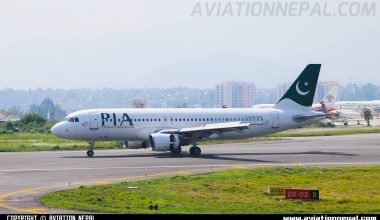In today’s fast-paced world, the skies have become busier than ever. With an increasing number of aircraft soaring through the clouds, it is more important than ever for pilots and aircraft owners to ensure that their planes remain in tip-top condition. But how can one guarantee their aircraft is always safe, reliable, and ready to take flight?
Here’s a guide to assist you:
Repair Damaged Parts
No matter how carefully you maintain your aircraft, it’s inevitable that over time, wear and tear or unexpected incidents can lead to damaged parts. Repairing or replacing these parts promptly is essential to maintaining your plane’s air-worthiness and ensuring the safety of everyone on board.

Common parts likely to get damaged are the propellers, doors, landing gear, and window panes. The damage arises from bird strikes, turbulence, and hailstorms, among other reasons.
It’s best to have qualified personnel address these issues. They have the skills and necessary tools like GSE By Semmco (Ground Support Equipment). They can also help the mechanics perform repairs.
Make sure the mechanic store is certified by the FAA (Federal Aviation Administration). The certification proves they meet all standards and are qualified to service planes.
Be Consistent With The Oil Changes
Oil plays a major role in a plane. It cools the engine, lowers friction between the moving parts, and ensures proper gas sealing between the cylinder walls and piston.
Consistency with the oil changes ensures everything is running as it should at all times. Most plane manufacturers recommend oil changes every 50 hours. However, you can reduce the interval to 25-30 hours.
Ensure you use the right aviation oil for your plane. Your choice of oil depends on the surrounding climatic conditions.
Be Consistent With Design Guides
Upon designing a plane, it’s taken through a test to test its air-worthiness. This test ascertains that engineers have manufactured the plane in accordance with the set regulations. The civil aviation authority writes down these regulations.
After passing the test, the regulating body will certify your plane as air-worthy. The same body requires you to maintain these standards in your plane’s lifespan. Should you want to modify the plane and adopt new technology, ensure the changes comply with the original design guidelines. The same principle applies to any alterations you make, especially during repairs.
Being consistent with the design guide ensures your plane remains air-worthy.
It’s important to note that the binding rules differ by state. Always abide by the rules of the civil aviation authority in your state. It should also be the state in which you registered your plane.
Always Work With An Aircraft Maintenance Logbook
The logbook records the performance and maintenance of a plane and its components. It contains details about repairs, inspections, alterations, hours of service, and approvals or disapprovals for return to service after inspections.
These details are important in keeping your plane air-worthy. They act as a guiding principle for handling your plane. The hours of service will tell you when to change the oil. Suppose there’s an inspection that pinpoints an issue. The maintenance crew or pilot will know what to change to ensure it meets the regulation threshold.

It’s important to note that maintenance logbooks are a must-have, as per civil aviation authorities. Also, it’s a formal document. Therefore, ensure all entries are correct. Wrong or unclear entries might render your plane not air-worthy, whereas it is.
Steer Away From Salty Surroundings
Most planes are made of iron or steel. These materials are prone to rusting, especially when exposed to moist and salty surroundings. In most cases, moist surroundings don’t interfere with the plane’s integrity. However, frequent exposure to salty surroundings causes rust on your plane. It’s likely the case if you fly over oceans and other salty water bodies.
Also Read: Coordination essential between airlines and government to maintain air safety
Steering away isn’t always a viable option since you must make the flights. Instead, always wash off the salt as soon as you land. Leaving it on your plane’s body increases the possibility of rust. You’ll notice its paint chipping off or wearing thin over time.
Rust interferes with the structural integrity of your plane. It’ll become a safety hazard, reducing its air-worthiness.
Besides washing off the salt, it’d help to hold your planes in a hangar, free of moisture exposure. Also, use a corrosion inhibitor. It’ll stop the rusting process if it’s begun and prevent future occurrences.
Conclusion
Keeping your plane air-worthy guarantees your safety, besides complying with the surrounding regulations. As a plane owner or airline, you don’t have to worry about ensuring your plane is suitable for flights. The discussion above has detailed how to ensure this.






